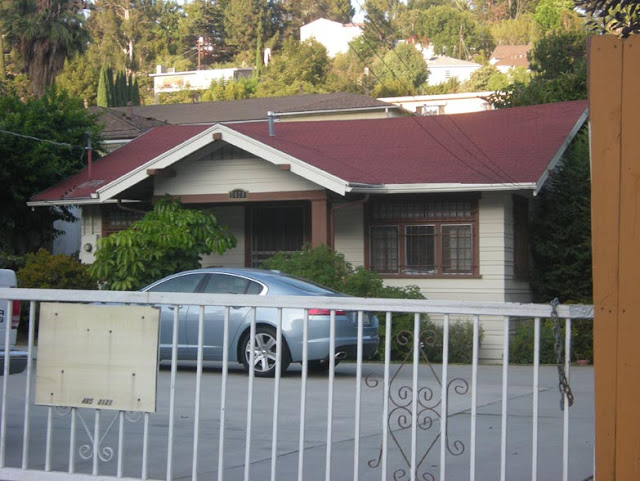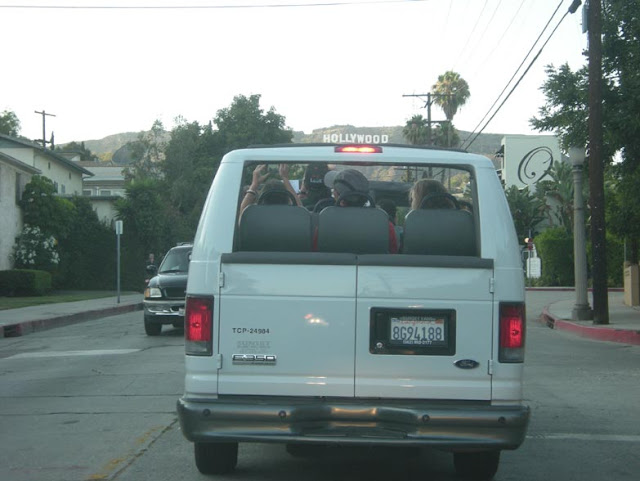
Peg Entwistle (5 February 1908 – 16 September 1932)[1] was a Welsh-born English actress of stage and screen, who gained notoriety after she killed herself by jumping from the Hollywood sign, shortly following her appearance in the film Thirteen Women.

Life and career
Entwistle was born Millicent Lilian Entwistle in Port Talbot, Wales, to English parents Robert S. and Emily (née Stevenson). She spent the first eight years of her life in West Kensington, London.[2] She later adopted "Peg" as a stage name and retained it for the remainder of her life. As a very young girl in March 1916, Entwistle came to America, via Liverpool with her father (Robert), her uncle (Charles Harold), and their two wives, Lauretta and Jane, aboard the SS Philadelphia.[3] Robert Entwistle had previously been brought to the U.S. from England by famed Broadway producer Charles Frohman and worked as Frohman's stage manager. After their father was killed by a hit-and-run driver in 1922, Entwistle and her two half-brothers were taken in by their uncle, Charles Entwistle, an actor and then manager of Broadway star Walter Hampden.[4]
Broadway
In 1925, Entwistle was living in Boston as a student of Henry Jewett's Repertory (now called The Huntington Theatre), and was one of the pioneering Henry Jewett Players who were gaining national attention. Walter Hampden gave Entwistle an uncredited walk-on part in his Broadway production of Hamlet which starred Ethel Barrymore.[5] She carried the King's train and brought in the poison-cup.[6]
Later, Entwistle played the role of "Hedvig" in Henrik Ibsen's The Wild Duck. It was Entwistle's performance that inspired a young Bette Davis to pursue acting. After the play, Bette Davis told her mother, "...I want to be exactly like Peg Entwistle."[7] Over the years, as she recounted her career, Bette Davis made several public references crediting Entwistle as her inspiration. Some years later, Yurka sent a note to Davis asking if she would like to play Hedvig. Davis sent word back to the Broadway director that ever since she had seen Entwistle in The Wild Duck, she knew she would someday play Hedvig.[7]
Soon after, Entwistle was recruited by the prestigious New York Theatre Guild. Her first credited Broadway performance was in June 1926 as "Martha" in The Man from Toronto, which opened at The Selywn Theatre and ran for 28 performances.[8] Entwistle performed in ten Broadway plays as a member of the Theatre Guild between 1926 and 1932, and worked with some of the most notable of her day, including George M. Cohan, William Gillette, Bob Cummings, Dorothy Gish, Hugh Sinclair, Henry Travers and Laurette Taylor. Her longest-running play, the 1927 smash hit Tommy in which she starred with Sidney Toler, ran for 232 performances and was the play for which she was best remembered.[9]
In April 1927, Entwistle married fellow actor Robert Keith at the chapel of the New York City Clerk's office.[10] She was granted a divorce from him in May 1929, when telling the judge that Keith "pulled a handful of hair from her head and that only intervention of a New York hotel detective saved her from great bodily injury."[11] Aside from charging him with cruelty, she claimed that he did not inform her that he had been married before and was the father of a six-year-old boy (actor Brian Keith).[9]
The play The Uninvited Guest closed after only seven performances in September 1927. Despite the play's poor reception, Entwistle was given positive reviews for her work. New York Times critic, J. Brooks Atkinson, wrote, "...Peg Entwistle gave a performance considerably better than the play warranted."[12]
She went on tour with the Theater Guild between Broadway productions. Changing characters every week, Entwistle drew a certain amount of publicity. She was featured in a number of articles, such as one from the Sunday edition of the New York Times in 1927,[6] and the Oakland Tribune several years later.[13]
Aside from a part in the suspense drama Sherlock Holmes and The Strange Case of Miss Faulkner, and despite her desire to play more-challenging roles, Entwistle was often cast as a comedienne; usually the attractive, good-hearted ingénue. In 1929, she told a reporter:
"I would rather play roles that carry conviction. Maybe it is because they are the easiest and yet the hardest things for me to do. To play any kind of an emotional scene I must work up to a certain pitch. If I reach this in my first word, the rest of the words and lines take care of themselves. But if I fail I have to build up the balance of the speeches, and in doing this the whole characterization falls flat. I feel that I am cheating myself. I don't know whether other actresses get this same reaction or not, but it does worry me."[13]
Entwistle's last Broadway appearance was in J.M. Barrie's Alice Sit-by-the-Fire.[14] Also starring was Laurette Taylor, one of the most popular and well-loved performers of her day. Due to her chronic alcoholism, Taylor failed to appear for two evening performances in less than a month, forcing the producers to refund the ticket-holders,[15] and end the show's run several weeks short of its schedule.[16] Entwistle and her co-players only received a week's salary at the time of the closing and not a percentage of the box office gross as had been agreed upon before the show opened.[17]



Hollywood
On May 4, 1932, a Los Angeles paper announced that West Coast producers Edward Belasco and Homer Curran had brought Entwistle to Los Angeles to co-star with Billie Burke in the Romney Brent play, The Mad Hopes.[18] It was staged solely as a tryout in preparation for a Broadway opening, then opened to rave reviews on May 23, 1932 at the Belasco Theater in downtown Los Angeles. The Belasco had 1,600 seats but the house was standing-room only to the doors. The Mad Hopes was a hit and closed on June 4, 1932 as scheduled. Theatre critic Flo Lawrence commented:
"...Belasco and Curran have staged the new play most effectively and have endowed this Romney Brent opus with every distinction of cast and direction. (producer) Bela Blau ... has developed the comedy to its highest points. Costumes and settings are of delightful quality, and every detail makes the production one entirely fit for its translation to the New York stage. In the cast Peg Entwistle and Humphrey Bogart hold first place in supporting the star (Billie Burke) and both give fine, serious performances. Miss Entwistle as the earnest, young daughter (Geneva Hope) of a vague mother and presents a charming picture of youth..."[19]
Despite the play's success and Entwistle's attempts to impress the critics, nothing came of her efforts.[9] She was set to return to New York when the play closed but Radio Pictures (RKO) called her for a screen test. On June 13, 1932, Entwistle signed a contract for a one-picture deal with RKO Studios and reported early in July to shoot her part as Hazel Cousins in Thirteen Women.[20] By this time, Entwistle already had played screen bits in several films.[9]
The film received poor reviews and negative feedback from test screenings. The studio held it back and edited out scenes deemed unnecessary to reduce running time, cutting back Entwistle's screen time greatly. The film would premiere after Entwistle's death at the Roxy Theater in New York City on October 14, 1932, and was released on November 11, 1932 to poor reviews.



Death
On Friday, September 16, 1932, Entwistle jumped from the "H" of the Hollywood sign (which then read "Hollywoodland"). Her body lay in the 100-foot ravine below until it was found two days later by a woman who wished to remain anonymous. Acting on this anonymous tip, a detective and two radio car officers found the body of a blonde-haired, blue-eyed woman who was moderately well-dressed. She remained unidentified until her uncle connected the description and the initials "P.E." on the suicide note in the newspapers with his niece's two-day absence.[21]
After identifying her body, Harold Entwistle filled in some of the blanks for authorities and the press. Entwistle was upset at not being able to impress the studios, and told her uncle that she was going to walk to a nearby drugstore and then visit friends. Instead, she made her way up the southern slope of Mount Lee, near her uncle's home, to the foot of the Hollywoodland sign. After placing her coat, shoes and purse containing the suicide note at the base of the sign, she made her way up a workman's ladder to the top of the "H".[21] The cause of death was listed by the coroner as "multiple fractures of the pelvis."[22]
Peg Entwistle's suicide note read:
"I am afraid, I am a coward. I am sorry for everything. If I had done this a long time ago, it would have saved a lot of pain. P.E."[23]
Her funeral was held in Hollywood and the body cremated. Her ashes were later sent to Glendale, Ohio for burial next to her father in Oak Hill Cemetery; her remains were interred on January 5, 1933.[24]

References
1.^ As explained elsewhere in the article, Entwistle almost certainly died on the night of September 16, 1932, but her body was not discovered until two days later, at which time the coroner pronounced her dead. Therefore, her date of death was listed as September 18, 1932, on the death certificate.
2.^ Official Port Talbot Registrar's Births Certificate Feb 5, 1908
3.^ List or Manifest of Alien Passengers of S.S. Philadelphia. March 11, 1916.
4.^ "Actor Dies; Struck By Auto That Fled". New York Times. 1922-12-20.
5.^ Hamlet at the Internet Broadway Database
6.^ a b "And Who Is Peg Entwistle?". New York Times. 1927-02-20.
7.^ a b Chandler, Charlotte (2006). The Girl Who Walked Home Alone: Bette Davis, a Personal Biography. Simon and Schuster. pp. 38. ISBN 0-743-26208-5.
8.^ "The Play by J. Brooks Atkinson: Smart Comedy in June". New York Times. June 28, 1926.
9.^ a b c d "Girl Ends Life After Failure In Hollywood", Syracuse Herald, September 20, 1932, p. 5
10.^ NYC Marriage license #12687. April 18, 1927.
11.^ "Pulled Hair - Stage Star Gets Divorce After Tale of Fight With Husband", The Pittsburgh Press, May 3, 1929, p. 47
12.^ "'Uninvited Guest' Falters". New York Times. 1927-09-28.
13.^ a b "English Actress With Guild". Oakland Tribune. 1929-05-05.
14.^ Atkinson, J. Brooks (1932-03-08). "A Night of Barrie ... Alice Sit-by-the-Fire". New York Times.
15.^ "Two Barrie Revivals Suddenly Canceled". New York Times. 1932-03-15.
16.^ "Laurette Taylor Absent". New York Times. 1932-04-06.
17.^ Courtney, Marguerite (1968). Laurette. Atheneum. pp. 342.
18.^ Yeaman, Elizabeth, 1932-05-04; 1932-06-07, Hollywood Citizen-News
19.^ Lawrence, Florence, 1932-05-24, Los Angeles Examiner
20.^ RKO contract dated June 13, 1932.
21.^ "Suicide Laid To Film Jinx". Los Angeles Times. 1932-09-20. pp. A1.
22.^ County of Los Angeles Department of Public Health/Vital Statistics--Standard Certificate of Death #10501, sections 24-25; Filed September 20, 1932
23.^ "Girl Leaps To Death From Sign". Los Angeles Times. 1932-09-19. pp. A1.
24.^ "Peg Entwistle". Find a Grave. http://www.findagrave.com/cgi-bin/fg.cgi?page=gr&GRid=4704.


Sad.
ReplyDelete